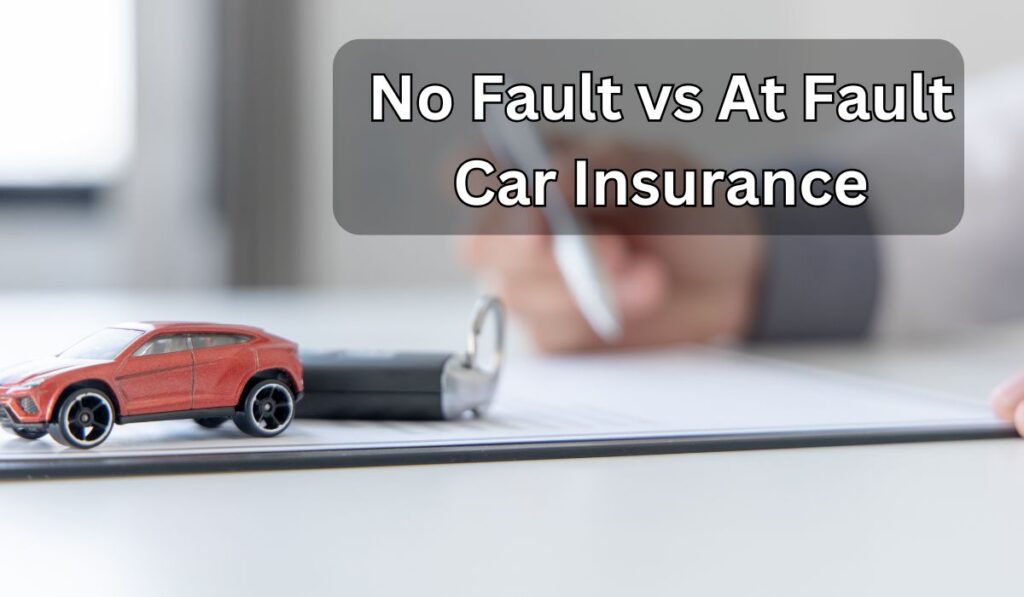Car insurance comes in two main types: no fault vs at fault car insurance. By February 2023, 12 states, like Florida and Hawaii, follow the no fault system. This means each driver’s insurance pays for medical costs, no matter who’s at fault. This raises a key question: how do these systems affect your coverage and costs?
It’s important to know about car insurance, as the average cost in the U.S. is $2,329 a year. No-fault states often have higher insurance costs. This is because claims are paid out regardless of fault, which can lead to more fraud. When choosing between no fault and at fault insurance, it’s vital to think about how they impact your premiums and protection. This means you should compare car insurance options carefully to find the right one for you.
The Basics of No Fault and At Fault Insurance Systems
No fault insurance and at fault insurance are two main ways to deal with car accidents in the U.S. In no fault states, drivers must have personal injury protection (PIP) coverage. This coverage pays for their medical bills and lost wages, no matter who caused the accident. This system aims to cut down on lawsuits and get victims help fast.
At fault insurance, on the other hand, finds fault with one or both drivers in an accident. The driver at fault’s insurance pays for damages and medical bills for the other party. No fault insurance offers quick medical and wage coverage without needing to prove fault. At fault insurance might have lower premiums and allows suing if the other driver is at fault.
Some main differences between no fault and at fault insurance include:
- No fault states require PIP coverage, while at fault states do not
- No fault states have a threshold for suing the at fault driver, while at fault states do not
- No fault insurance systems often have caps on PIP coverage, while at fault insurance systems do not
It’s important for drivers to understand no fault and at fault insurance. Knowing the benefits and advantages helps drivers pick the right insurance for their needs and budget.
| State | Insurance System | PIP Coverage Required |
|---|---|---|
| Florida | No Fault | Yes |
| California | At Fault | No |
| Michigan | No Fault | Yes |
No Fault vs At Fault Car Insurance: Key Differences and Impact on Drivers
Understanding the differences between no fault and at fault insurance is key. No fault insurance offers quicker coverage for medical and lost wages. At fault insurance, on the other hand, provides more detailed coverage for damages. Knowing these differences is vital for car insurance coverage.
In no fault states like Florida, drivers must have Personal Injury Protection (PIP) coverage. PIP covers up to 80% of medical bills and 60% of lost income. But, it doesn’t cover non-economic damages like pain and suffering.
At fault states, drivers need liability insurance to cover damages to others. In these states, injured parties can sue without a serious injury threshold. They can claim for medical costs, lost wages, and pain and suffering. Drivers should think about their needs to decide between no fault and at fault insurance.
When choosing, consider these points: * Coverage for medical and lost wages * Ability to sue for damages * Premium costs * State-specific insurance rules
Understanding no fault and at fault insurance is key for making a good choice. By looking at the differences and their impact, drivers can pick the best insurance for their needs and protection.
Conclusion: Making the Right Choice for Your Insurance Needs
Choosing the right car insurance is important. Drivers need to think about their driving history, the type of vehicle they own, and their financial situation. No-fault insurance helps speed up claims and covers medical costs quickly. At-fault insurance, on the other hand, pays for damages and pain and suffering for the non-at-fault party.
What insurance you choose depends on your state’s laws. Each state has its own rules. It’s key to know what’s required in your area. This way, you can pick the insurance that fits your needs and budget.


